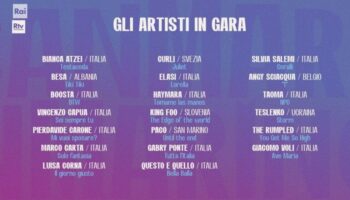As announced earlier, the Romanian capital Bucharest will host the fourth annual Junior Eurovision Song Contest! To celebrate the launch of our Bucharest 2006 section, which will be expanded in the upcoming months, we'll give you an introduction to the contest's host city! Hello Bucureşti!
Bucharest is the capital city and industrial and commercial centre of Romania. It is located in the southeast of the country and lies on the banks of the Dâmboviţa River.
Landmarks
Bucharest has a number of landmarks that are identified with it throughout the world. Perhaps the most prominent of these is the Palace of the Parliament, which was built in the 1980s during the reign of Communist dictator Nicolae Ceauşescu. Currently the largest building in Europe and the third-largest in the world, the Palace houses the Romanian Parliament (the Chamber of Deputies and Senate), as well as the National Museum of Contemporary Art. It is also often used as a convention centre.
Another well-known landmark of Bucharest is the Arcul de Triumf (Triumphal Arch), which was built in 1935 and was modelled after the Arc de Triomphe in Paris.
Cultural events and festivals
There are a number of cultural festivals in Bucharest throughout the year, in various domains, even though most festivals take place in the summer months of June, July and August. The National Opera organises the International Opera Festival every year in May and June, which includes ensembles and orchestras from all over the world. The Romanian Athaeneum Society hosts the George Enescu Classical Music Festival at various locations throughout the city in September every year. Additionally, the Museum of the Romanian Peasant and the Village Museum organise a number of events throughout the year showcasing Romanian folk arts and crafts.
In recent years, due to the growing prominence of the Chinese community in Bucharest, several Chinese cultural events have taken place. The first officially-organised Chinese festival was the Chinese New Year's Eve Festival of February 2005 which took place in Nichita Stănescu Park and was organised by the Bucharest City Hall.
In 2005, Bucharest was the first city in Southeastern Europe to host the international CowParade, which resulted in dozens of decorated cow sculptures being placed at various points across the city.
Traditional culture
Bucharest's culture has, especially in the last 15 years, become more modern and wordly in comparison to other Romanian cities. Traditional Romanian culture, however, continues to have an influence in domains such as theatre and music. Additionally, Bucharest has two internationally-renowned ethnographic museums, the Museum of the Romanian Peasant and the open-air Village Museum. The Village Museum, in Herăstrău Park, contains 272 authentic buildings and peasant farms from all over Romania. The Museum of the Romanian Peasant was declared the European Museum of the Year in 1996, and displays a rich collection of textiles (especially costumes), icons, ceramics, and other artifacts of Romanian peasant life.
The Museum of Romanian History is another important museum in Bucharest, containing a collection of artefacts detailing Romanian history and culture from the prehistoric times, Dacian era, medieval times and the modern era.
Music
Bucharest is home to Romania's largest recording labels, and is often the residence of Romanian, and more recently Moldovan, musicians. The city's music scene is quite eclectic. Many Romanian rock bands of the 1970s and 1980s, such as Iris and Holograf, continue to be popular, particularly with the middle-aged, while since the 1990s there has been growth in the boy band and hip hop genres. The eclectic pop-rock band Taxi have been gaining international respect, as has Spitalul de Urgenţă's raucous updating of traditional Romanian music. While many discos play manele, a Turkish-influenced type of music that is particularly popular in Bucharest's working class districts, the city has an increasing jazz and blues scene, and, to an extent, eurodance/trance and heavy metal/punk.
Architecture
Bucharest's architecture is highly eclectic due to the many influences on the city throughout its history. The city centre is a mixture of medieval, classical and art deco buildings, utilitarian Communist-era architecture, as well as modern structures such as skyscrapers and office buildings that were mainly constructed after 2000.
� Learn more about Bucharest at Wikipedia.



